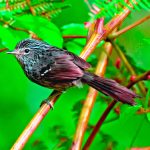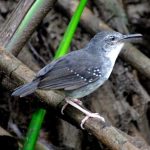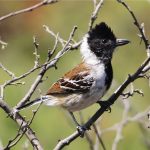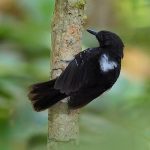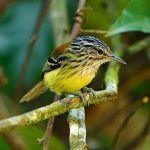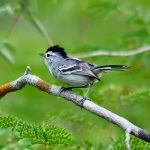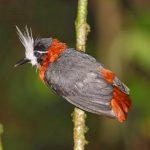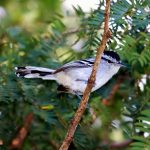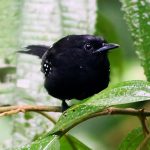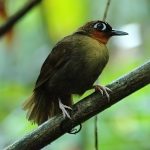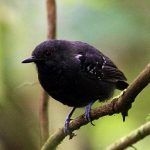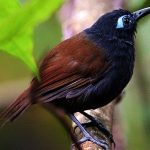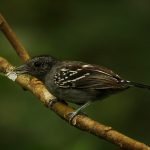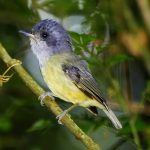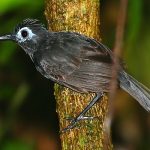Fasciated antshrike
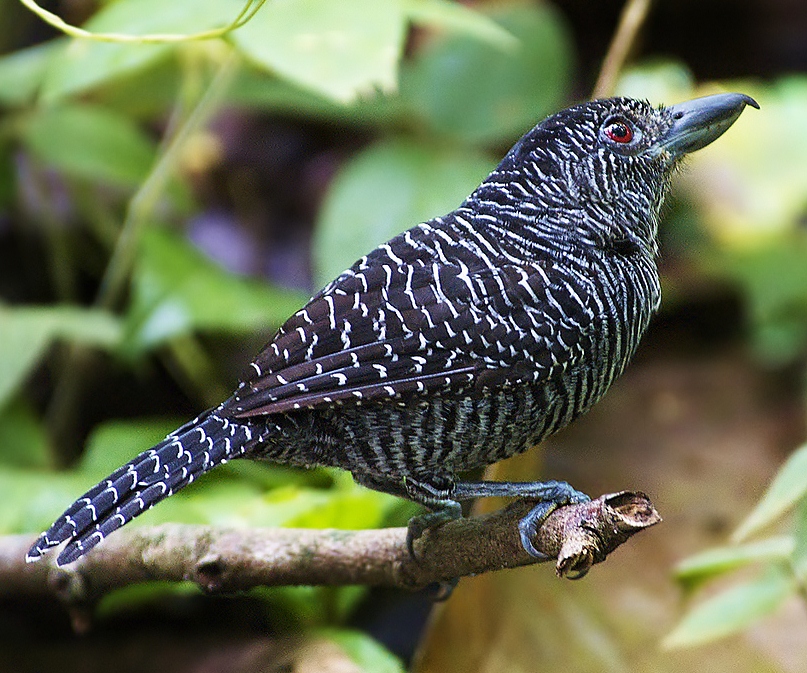
 |
| Photo by Dave Wendelken (Flickr) |
Common name:
fasciated antshrike (en); choca-zebrada (pt); batara fascié (fr); hormiguero rayado (es); zebra-ameisenwürger (de)
Taxonomy:
Order Passeriformes
Family Thamnophilidae
Range:
This species is found from south-eastern Honduras to north-western Venezuela and south through Colombia to north-western Ecuador and northern Brazil, across virtually all of Amazonia and in the Guyanas.
Size:
These birds are 17-18 cm long and weigh 30-40 g.
Habitat:
These birds are found in evergreen rainforests, typically in the mid-storey canopy, but also along forest edges and in rior in second growths and thickets.
Diet:
The fasciated antshrike feeds on large insects and sometimes small frogs and lizards, but unlike other antshrikes they rarely follow ant swarms. They may ocasionally also eat fruits.
Breeding:
These birds breed in April-June. The nest is a thick-walled cup made of dark plant fibres, placed in a fork of foliage branches 2-8 m above the ground. There the female lays 2-3 cream-coloured eggs with brown and lilac spots. There is no information regarding the incubation and fledging periods.
Conservation:
IUCN status – LC (Least Concern)
The fasciated antshrike has a very large breeding range and is described as fairly common. This species is expected to lose 15% of its available habitat over the next 3 generations, due to deforestation in the Amazonian basin, but it is not considered threatened at present.
